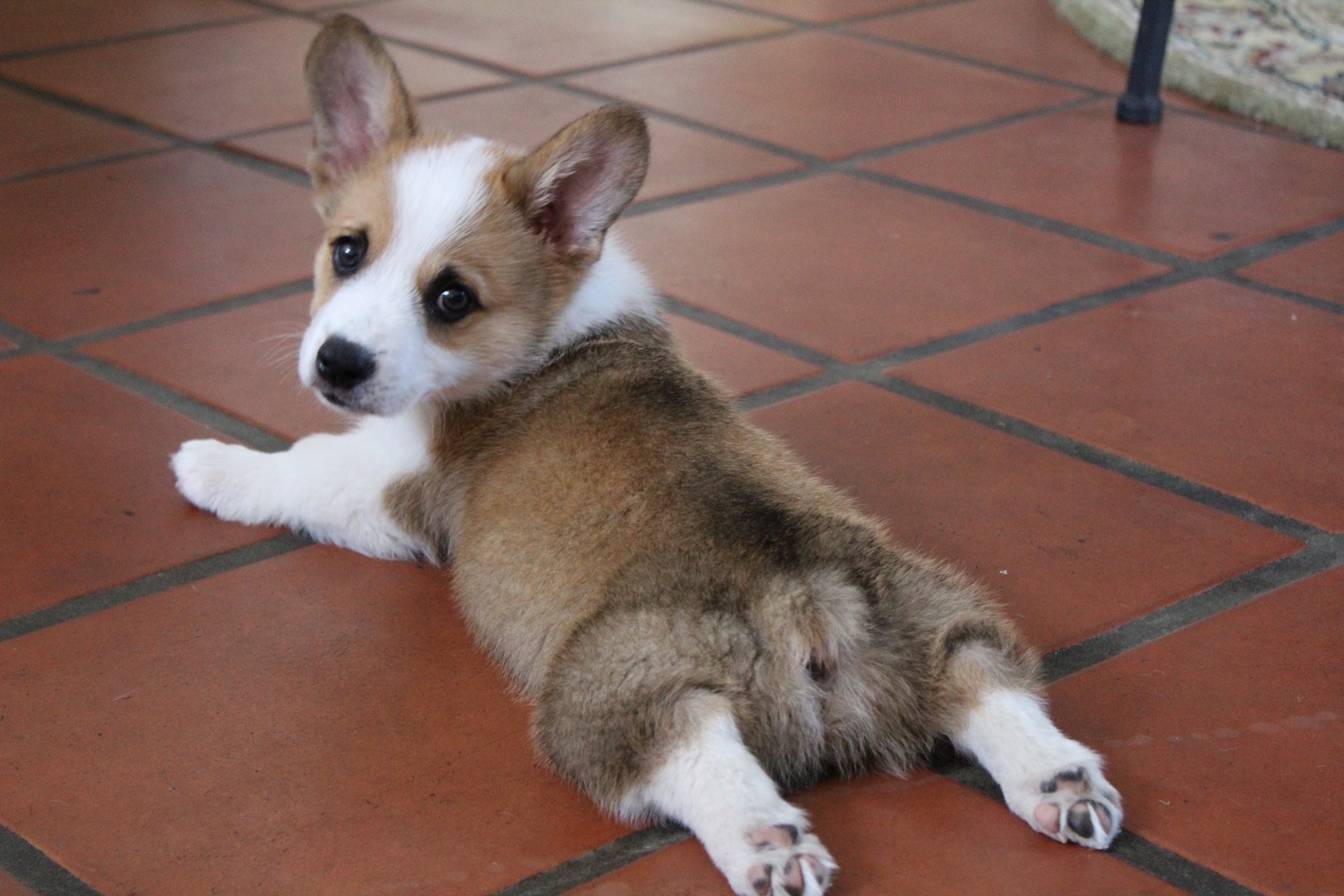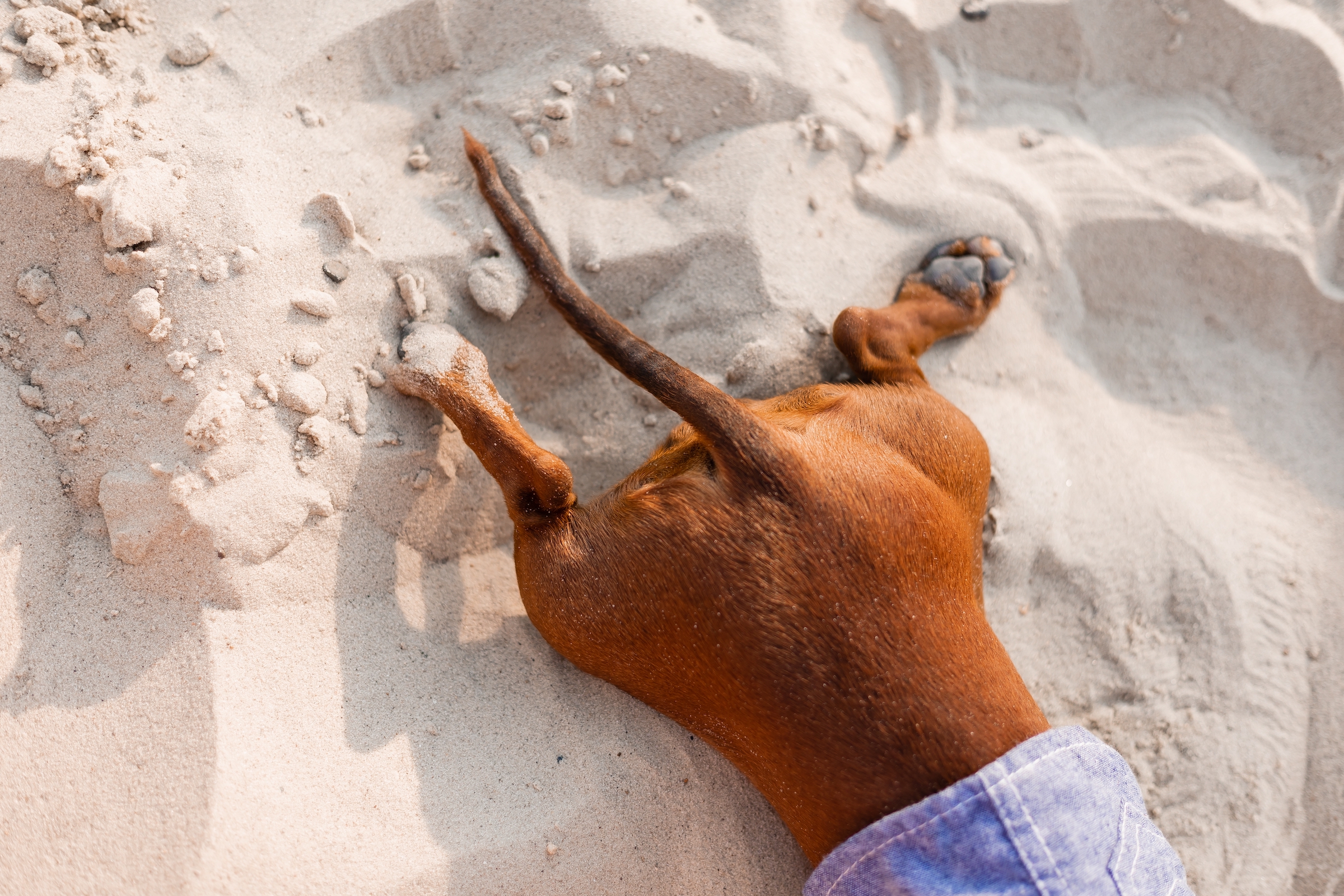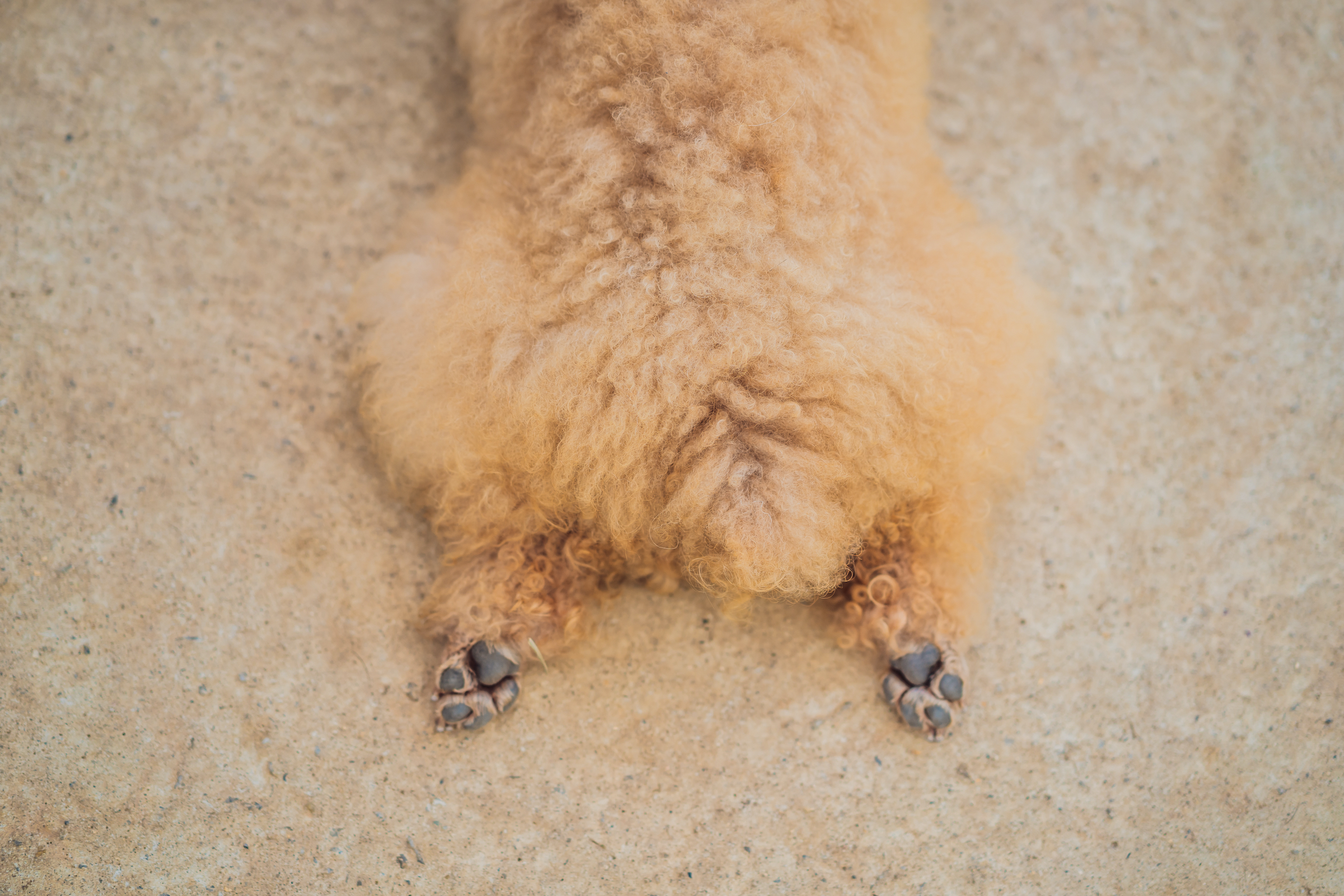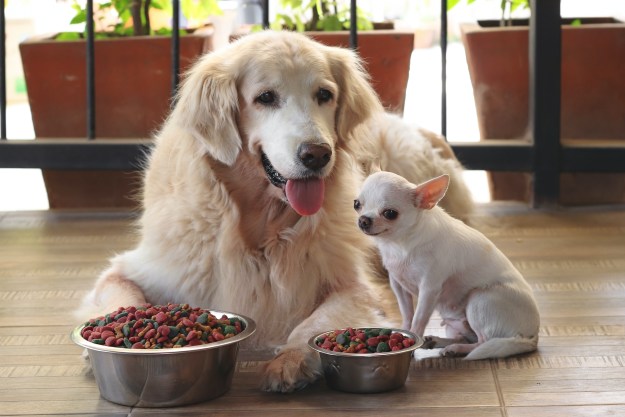We love our dogs for so many reasons, and there’s no denying how much they make us laugh. Just look at all the adorable pup videos on social media! From cute training fails to rescue dogs experiencing new things, there’s no shortage of adorable viral canines.
One video trend has pet parents and vets doing a double-take: dog splooting. This odd lying position may look quite cute, but it’s not always as innocent as it may seem. In many cases, splooting itself isn’t a cause for concern, but you may want to contact your veterinarian if you notice your dog in this position while experiencing some other issues.
So what are we talking about exactly? Here’s everything you need to know about dog splooting and when it may indicate a problem.

What is dog splooting? You’re sure to know it when you see it
This one is for all the yogis out there: Dog splooting looks an awful lot like Sphinx pose! When a dog is in this position, they’re lying on their stomach with their back legs straight out behind them instead of tucked under their body.
A sploot might look like a few different things. These are the most common poses you’ll see, according to Gilbertsville Veterinary Hospital.
- The full sploot: When a pup lies belly-down with both hind legs stretched out behind them, as described above.
- The half sploot: When a dog assumes the sploot position with one back leg stretched out and the other tucked under their body like normal.
- The side sploot: When a pup lies on their stomach with one or both legs pointing to one side instead of straight behind them
Though dogs have been splooting for ages, this particular term has gained much traction online in the last year. The National Canine Research Association of America (NCRAOA) notes that this position may also be called:
- Frogging, frog legs, or frog dogging
- Pancaking
- Superman
What would you name this unique pose?

Why do dogs sploot? Is splooting a bad thing or nothing to worry about?
There’s no denying that this unique stretch is 100% cute, but why do dogs do it? As it turns out, it may depend on your dog’s breed and age. The NCRAOA explains that several smaller breeds, like corgis and chihuahuas, can have more flexibility in their legs than other pups. For them, splooting can be a normal lying position, or maybe even a good stretch.
For pups whose breeds don’t fall into this category, assuming a sploot position can be a positive, negative, or completely neutral sign. Most of the time, though, it’s not a cause for concern. You may notice younger dogs lying like this more often than older canines, but that’s just because younger dogs tend to be more flexible, according to Top Dog Health.
Any dog can get a nice stretch from this position, but they can lie like this to cool off, too. Your pup might just be a bit warm if you notice them splooting on a cool surface like tile or hardwood. Hey — you might want to try it for yourself during the next heat wave!

When dog splooting is a cause for concern, especially in older dogs
Though splooting is often not a problem, it might be worth a closer look if you notice your dog suddenly picking up this behavior. Puppies will frequently look to the older dogs around them when learning new behaviors, but an older dog who starts splooting might be doing this out of discomfort.
An older dog who sploots could possibly be dealing with a muscle or joint issue that leaves them wanting to stretch. The NCRAOA notes that a sploot could be a way of favoring an injury, an arthritic hip or knee, or even the beginnings of canine hip dysplasia. To determine if this is the case, keep an eye on their walking and other movements as well as any differences in behavior. In the end, a trip to the vet never hurts!
Top Dog Health reminds pet parents to pay attention to their pet’s skin too. Splooting can be a way of cooling and calming hot or rashy skin, so make sure to take a look at their underside as well.
Don’t be alarmed by these possible implications of splooting—they aren’t common! They can also be caught and cared for quickly under your watchful eye, so a sploot here and there isn’t necessarily a reason to worry. Just sit back, grab your camera, and enjoy the furry adorableness of your pup’s funniest-looking stretch. If it doesn’t put a smile on your face, what will?
Editors' Recommendations
- Why does my dog have a bald patch on their tail? Here are the answers you need
- Looking for signs your dog has ticks? These telltale symptoms mean you have a flea or tick problem
- Xylitol is dangerous for dogs: 10 surprising products that contain it as a hidden ingredient
- Do puppies sleep a lot? These are the perfectly normal sleeping habits of a healthy pup
- Here’s how to treat a dog with itchy paws, starting with finding the cause of paw discomfort




